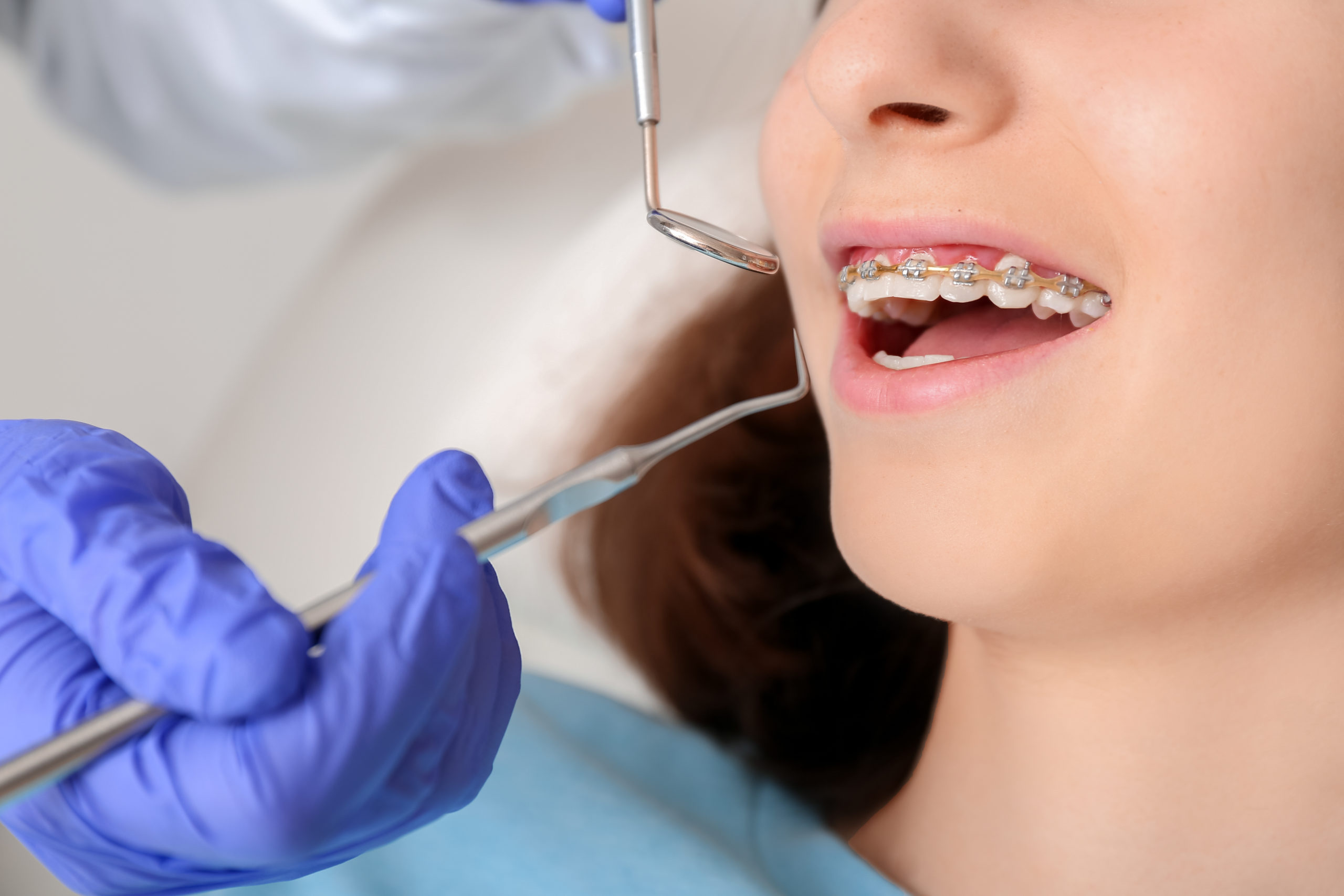What Sets Cumming Braces and Aligners Apart from Various Other Orthodontic Treatments
Wiki Article
Comprehensive Overview to Orthodontics Treatments for Fixing Dental Misalignments
Recognizing the details of each treatment, including their devices, advantages, and prospective disadvantages, is vital in making educated choices regarding one's orthodontic treatment. As we browse via the detailed overview to orthodontic procedures for correcting dental imbalances, the complex details of each technique will certainly unravel, losing light on the path toward a functional and unified dental positioning.Orthodontic Procedures Review

In addition to typical dental braces and clear aligners, orthodontists may likewise advise other interventions like headwear, palatal expanders, or retainers to address certain alignment problems (cumming orthodontist). These procedures are customized per patient's one-of-a-kind requirements and might include a combination of therapies to attain the preferred results. Routine changes and monitoring are essential components of orthodontic therapy to ensure development gets on track and to make any needed modifications along the road. By going through orthodontic treatments, people can not only accomplish a straighter smile however additionally improve their total oral health and wellness and feature.
Typical Dental Braces: How They Work
When taking into consideration orthodontic treatments for dental imbalances, typical braces stand apart as a reliable approach for fixing teeth placing. Conventional dental braces contain brackets, cords, and bands that work with each other to apply continuous stress on the teeth, progressively moving them right into the preferred alignment. The braces are attached to the teeth using an unique adhesive, and the cables are threaded through the braces. By readjusting the stress of the cords, orthodontists can regulate the direction and pressure used to each tooth, assisting them into proper placement gradually.
One secret aspect of exactly how typical braces work is the procedure of bone renovation. As pressure is related to the teeth with the dental braces, the bone surrounding the teeth is reshaped to support the new tooth placements. This remodeling is necessary for the long-term stability of the dealt with alignment. Clients will require regular modifications at the orthodontist's office to ensure the dental braces remain to use the proper pressure for efficient teeth motion.
Unnoticeable Aligners: Cons and pros
Undetectable aligners use a practical and discreet alternative to conventional braces for correcting oral imbalances. These clear, custom-made trays are virtually invisible when put on, making them an enticing choice for individuals seeking a more aesthetically pleasing orthodontic therapy. One of the primary benefits of unseen aligners is their removability, permitting less complicated upkeep of oral health contrasted to conventional braces. People can eliminate the aligners before eating or cleaning their teeth, minimizing the risk of food obtaining stuck in the appliance and streamlining the cleaning procedure.
Surgical Orthodontic Options
Surgical treatments in orthodontics present sensible alternatives for resolving complicated oral imbalances that might not be successfully fixed through standard orthodontic treatments. While typical dental braces and unseen aligners can remedy lots of orthodontic issues, particular situations require medical treatment to attain optimal outcomes. Surgical orthodontic alternatives are commonly suggested for serious malocclusions, substantial jaw inconsistencies, and situations where the underlying bone framework requires modification to attain appropriate placement.One common medical orthodontic procedure is orthognathic surgical procedure, which involves rearranging the jaws to correct practical concerns such as difficulty chewing or speaking. This surgery is typically executed in cooperation with an orthodontist who aids straighten the teeth before and after the treatment. Surgical orthodontics might also involve treatments to his comment is here reveal affected teeth, eliminate excess gum tissue, or improve the jawbone to create a much more unified face profile.
Prior to taking into consideration surgical orthodontic alternatives, clients go through a detailed assessment to determine the requirement and Read Full Report potential benefits of such treatments. cumming orthodontics. While surgery might seem difficult, it can significantly enhance both the feature and visual appeals of the smile in instances where conventional orthodontic treatments fail
Retainers and Post-Treatment Care

Failing to comply with post-treatment care directions can result in relapse, where the teeth gradually move back towards their initial placements. Regular retainer wear, excellent oral hygiene, and regular oral exams are essential for keeping the outcomes accomplished with orthodontic surgical treatment and guaranteeing the long-term stability of the corrected oral placement.
Verdict
In verdict, orthodontic procedures provide various options for correcting oral imbalances. Conventional braces make use of steel brackets and wires to shift teeth right into appropriate alignment. Invisible aligners give an even more discreet choice yet may not appropriate for all cases. see this Surgical orthodontic alternatives are offered for more extreme misalignments. Retainers are commonly made use of post-treatment to preserve the brand-new alignment. On the whole, orthodontic treatments can effectively boost dental wellness and aesthetic look.As we navigate with the detailed guide to orthodontic procedures for dealing with dental imbalances, the intricate details of each approach will unfold, dropping light on the path toward a unified and functional oral positioning. - cumming aligners
One of the most usual orthodontic treatments is the use of braces, which consist of metal brackets and cables that use gentle stress to gradually shift teeth into the preferred position.When considering orthodontic treatments for oral misalignments, standard dental braces stand out as a reliable method for fixing teeth placing. Additionally, unseen aligners might not be suitable for intricate orthodontic issues that call for even more significant teeth movement, as they are normally advised for light to modest instances. Retainers are custom-made orthodontic devices developed to hold teeth in their remedied settings after the completion of orthodontic treatment.
Report this wiki page